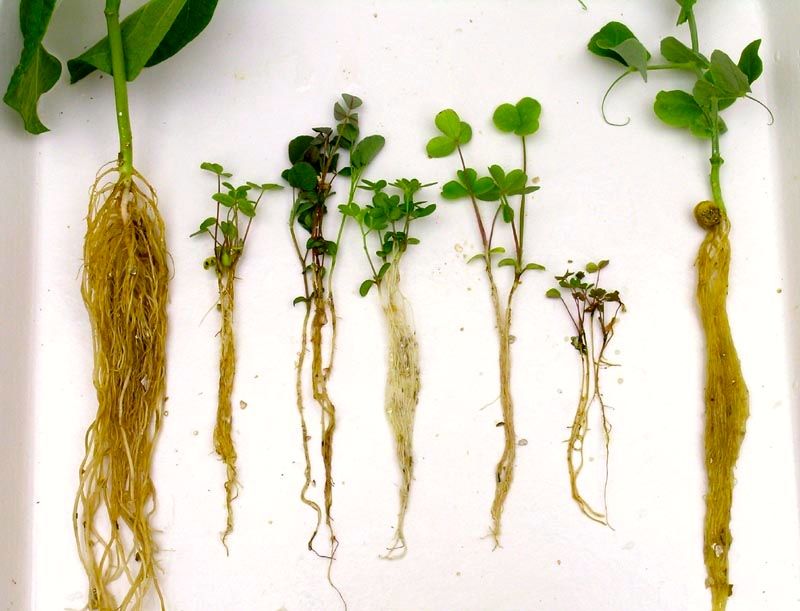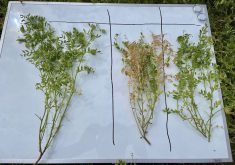Nervous eyes are watching it, and voices are already whispering that it may become the clubroot of pulse crops. Aphanomyces is a virulent root rot, technically classified as a water mould, and it appears to be slowly spreading throughout the Prairie region, affecting annual and perennial legumes including legume forages.
First confirmed in Saskatchewan in 2012, aphanomyces has subsequently been found in fields across five Alberta counties, causing pulse industry insiders considerable concern.
Beth Markert, a seed specialist with Bayer CropScience based in southern Alberta, says this concern is well founded. The situation isn’t a crisis yet, but the impact on individual fields can be profound.
Read Also

The slow evolution toward real-time variable rate fertilizer
We need to hit the “easy button” on variable rate fertilizer and move away from the default blanket application. But…
“I’ve seen yield reductions as high as 30 to 50 per cent,” Markert told Country Guide during a recent conversation. “It can be very significant.”
Aphanomyces can be a bit tough to spot in the field too, since the first symptoms show up on roots rather than above ground. The pathogen chokes off the root system, preventing nutrient and water uptake. Eventually secondary symptoms affect leaves and stems as the plants wilt and discolour.
While the disease may have a reputation for killing seedlings outright, that’s not exactly what happens. Instead it cripples the young plants, making them uncompetitive with weeds and more vulnerable to bugs and other diseases.
In fact, it’s those secondary infections that are frequently the first thing growers actually notice, Markert says, since aphanomyces penetrates cell tissue, then acts as a conduit for other diseases.
“Aphanomyces makes it a lot easier for other plant diseases, like fusarium or rhizotonia, to enter the plants,” Markert notes.
One way growers might be able to identify aphanomyces in their fields is by looking for patterns when parts of the field aren’t thriving. Aphanomyces symptoms tend to begin in low spots that the rest of the field drains into so they have the ideal damp conditions in the rooting zone that the disease thrives with.
“You can see the disease moving like fingers up the hillside as it spreads out,” Markert says.
One way the disease resembles clubroot is its longevity in the soils, where it can easily survive 10 to 12 years before the inoculum levels begin to fall significantly.
“Because it lasts so long, if you just changed to a four-year rotation, it wouldn’t really matter,” Markert says. “It’s going to prove to be a pretty big challenge for pulse growers.”
If the problem isn’t present, or is only present at low levels, longer rotations can help to prevent inoculum from building up in the soil. But for growers the real challenge is going to be preventing the buildup in the first place, and keeping it from moving around the farm if it is there.
“If they have a field where they know it’s present, they should be either cleaning equipment off after they’ve been working in that area, or saving that land for last,” Markert says. “Otherwise they could be spreading it across the whole farm.”
Those growers will also want to pay attention to the fields they’re planting their legume crops into. A coarse, well-drained soil is far less likely to see aphanomyces issues because the disease requires free moisture in the soil to thrive and move.
One thing that doesn’t exist, at least at present, is a seed treatment that can prevent the infections — though that’s not to say growers shouldn’t be treating their seed anyway. The treatments will, at the very least, combat the potential secondary infections and limit the scope of aphanomyces’ yield hit.
Another management strategy that has been shown to pay off is selecting healthy seed with the highest possible germination rates. Getting the crop off to a good start early in the season is key to preventing or limiting how bad outbreaks could be.
One consideration for growers is that other crop protection products can compound the problem, and should be avoided wherever possible, because applying them will just heap more stress on an already hard-pressed crop.
In the end, growers will need to take the bull by the horns, and grapple with this challenge head on if they expect to continue growing legume crops, Markert says.
“It’s going to be a question of figuring out the best management practices and being very diligent in applying them,” Markert says. “It’s the only way they’ll be able to slow and stop this disease.”
This article was originally published as, “Aphano-what?” in the March 31, 2015 issue of Country Guide
















